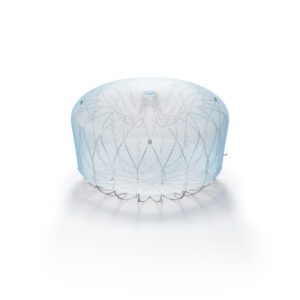WATCHMAN Implantation
Atrial fibrillation (AFib) is a type of cardiac arrhythmia. Medications are a common first-line treatment for AFib and include blood thinners that reduce the risk of stroke. However, blood thinners are not right for everyone, especially those who are at risk for bleeding.
Here’s more about how the WATCHMAN works and how to contact The Center for Atrial Fibrillation and Electrophysiology at HCA to learn more about this AFib treatment option.
What Is the WATCHMAN Device?
In people with AFib, blood can pool in the left atrial appendage (LAA) of the heart, increasing the risk of blood clots. The WATCHMAN is an implantable device placed in the LAA through a catheter. Its purpose is to trap and prevent blood clots from causing a stroke.
The WATCHMAN device is a permanent, one-time procedure. It cannot be seen outside of the body and is an ideal treatment option for some people with AFib in whom blood thinners can cause bleeding.
How Does It Work?
The WATCHMAN device is designed to completely close off the LAA to reduce the risk of stroke in people with Afib that is not caused by mitral stenosis. It is about the size of a quarter and resembles a tiny parachute.

©2024 Boston Scientific Corporationor its affiliates. All rights reserved.
The device is placed into the LAA via a catheter inserted into a vein in the upper leg. Over time, tissue grows over the WATCHMAN, which stays in your body permanently.
Who Is a Candidate?
Ideal candidates for the WATCHMAN device have Afib not caused by a valve problem and need a safer alternative to blood thinners. Blood thinners are linked to an increased risk of bleeding and may not be suitable for everyone.
There are many potential rationales to implant a Watchman instead of using a blood thinner, including:
- Prior severe or recurrent bleeding
- The need to use multiple other antithrombotic medications such as aspirin, Plavix, and Brilinta
- Bleeding due to cancer, low platelets, or other conditions which predispose to bleeding
- Difficulty adhering to the strict regimen of anticoagulant use
- Intolerance to anticoagulants
- High risk of falls, or prior falls resulting in injury
- Cognitive impairment
- Severe renal failure
- Lifestyle or occupation that imposes a bleeding risk
If you are diagnosed with non-valvular AFib, your cardiologist can determine whether you are an ideal candidate for the WATCHMAN based on your medical history.
How Is the Device Implanted?
The WATCHMAN procedure is minimally invasive and people typically go home the same day. The procedure is performed under general anesthesia and lasts around one to two hours.
First, your cardiologist will make a tiny puncture in the upper part of your leg near the groin, to introduce a narrow tube, called a catheter, into a vein there, to guide the WATCHMAN device to your LAA. After the device is implanted, the catheter will be removed, the puncture will be closed, and you will be moved to the recovery room for monitoring.
Recovery
Due to its minimally invasive nature, recovery from the WATCHMAN procedure is relatively fast. You may resume light duty activites that day, though we advise against strenuous activity for 14 days. There may be bruising and tenderness at the puncture site, which will resolve on its own within a few days.
Your electrophysiologist will follow up with you regularly after the WATCHMAN procedure to discuss your new medication regimen and ensure the device works as expected. Many patients with the WATCHMAN device can switch from blood thinners and/or antiplatelets to aspirin within 45 days to six months. Your provider can talk to you in greater detail about what to expect from recovery based on your unique health situation.
The physicians and staff at The Center for Atrial Fibrillation and Electrophysiology at HCA are devoted to our patients and are committed to providing quality patient care on all levels. Contact us at 908-806-0190 to request an appointment if you are experiencing symptoms of heart rhythm abnormality.
